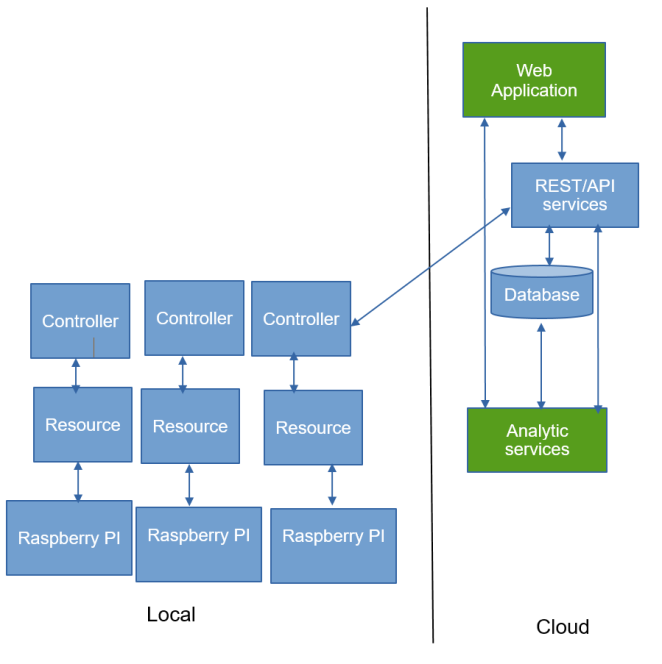Purpose & Requirements Specification
Purpose of the project:
The purpose of Smart Parking is to help people to locate the available parking spots and can reserve a parking spot.
Behaviour:
The user needs to install this application on his mobile by downloading it and the user can get availability of parking or propose next parking available time. This parking system can be installed in all parking demand places in the city such as Shopping malls, Airports, hotels etc.
Hardware Requirements:
- Raspberry PI
- Ultrasonic Distance Sensor
- Two-way LED
- 1k Ohm Resistor
- Jumper wires
System Management Requirement:
This system provides remote monitoring and control function. An administrator will be appointed based on the size of the institution, who monitors sensors, payment issues, timing issues (towing vehicle in case of delay in moving out). He also monitors the accuracy of the system and updates information accordingly.
Data Analysis Requirement:
The system will maintain a repository to provide information to support decision making in determining pricing and planning. The system will also calculate the time of parking slot utilized by the user and should report it to the user.
Application Deployment Requirement:
Smart parking detectors can be installed in any place. To install Smart Parking System in any institution will happen in an incremental manner instead of blocking all the parking and installing (depends on the size of institution) which may take few hours to the shutdown of that particular block. Internet connection is mandatory for these devices which can be provided with Wifi or Ethernet. These devices fetch and update the information from/into a database, which is located on a web server. The user should be connected to the internet to get the updates on available parking slots.
Process Specification:
Use case diagram:
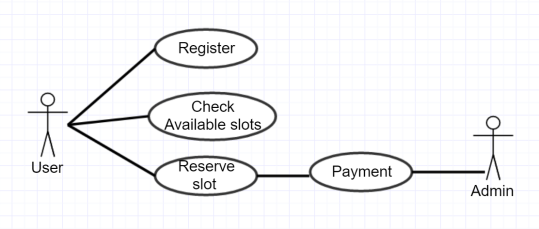
Sensor level diagram:
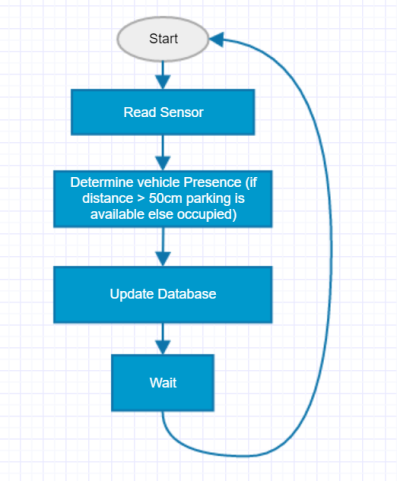
Sensor keeps on checking for a vehicle presence in the parking slot. If it finds any change in its state it will update the details in Database. If parking slot is empty it will update the total availability count adding one to it. When parking slot at the particular sensor is occupied, it will update the availability count by subtracting one from it. When parking is full, it will check expire time-stamp(estimated time to vacate) in the database and determines the availability of next parking slot.
If distance calculated by the sensor is more than 50 cm, parking is available, if its less than that parking slot is occupied.
Process Diagram:
The process diagrams for Smart Parking are as shown below:
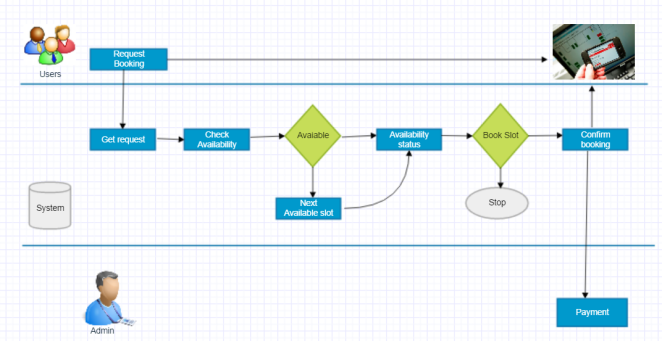
Process Flow Diagram shows the relationships between the major components of the system. Also, tabulate process design values for the components in different operating modes.
In the smart Parking, Users first request for the available parking slots through a web page. The system checks for the available parking slots in the database and confirms the slot accordingly to the user. The payment method is controlled by the administrator.
Domain Model Specification:
The domain model specification of Smart Parking is as shown below:
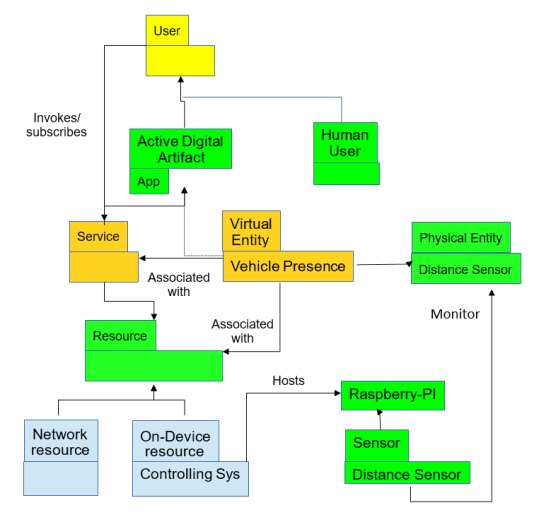
IoT Level Specification:
I am going to implement Smart Parking in IOT level 4. It uses a single level sensor for collecting data and store it in the cloud database. It also uses local analysis, Rest services.
